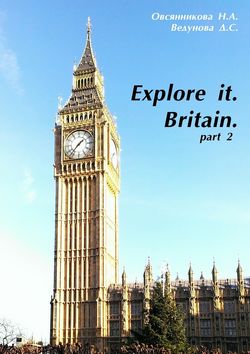Читать книгу Explore it. Britain. Part 2 - Д. С. Ведунова - Страница 8
UK education system
ОглавлениеUK education system has evolved over the centuries and is now subject to strict quality standards. Education in the UK is compulsory for all citizens between the ages of 5 to 16 years.
There are two sectors of education: public (free education) and private (fee-paying schools, private schools). In the UK there are two education systems that are easy to get along together, one in England, Wales and Northern Ireland, the second – in Scotland.
According to the OECD and UNESCO in 2012, the country had an enrollment of 3.5 million students, of whom 427,000 – foreign citizens. At the same time about 27 thousand British trained abroad.
There is a huge variety of schools in the UK. In various handbooks, online, magazine and newspaper articles of different criteria for the classification of schools can be used. A common type of school in the UK – a boarding school (Boarding School), where students are taught how, and live at the school. The first boarding schools appeared in Britain in the early Middle Ages, mainly in monasteries. In the XII century, Pope ordered all Benedictine monasteries open charity school at Catholic monasteries. Later fees in such schools began to take charge. Although aristocratic families preferred to convent school home schooling, eventually spread the belief that young people, regardless of social background useful to learn together with their peers. This belief became the basis for the organization and development of privileged boarding schools, among which there are those that nurture, educate and form the elite of modern British society for over a thousand years. In the list of the most expensive and prestigious schools in the world are present, and the British boarding schools.
Classification school-age students
full-cycle schools – where children are taught all ages from 3 to 18 years.
• Institutions of pre-school education – also called crèches and kindergartens for children from 2 to 7 years. There are taught to read, write, count, and develop through play. Typically, these schools are organized in collaboration with the schools for younger students. – Age of the students from 2 years 9 months to 4 years.
Institutions for younger students
• Primary schools – pupils from age 2 to 11 years. Exams SATs carried out in 2 phases, on the first and sixth years of study. The results of the second test are important for admission to Secondary School.
• Junior Schools – for children from 7 to 13 years. Here, children are special initial general training cycle on various subjects, which is completed by passing the exam Common Entrance Examination. Successful completion of the exam – this is a mandatory condition for admission to high school.
Institutions for older students
Senior Schools – for teenagers from 13 to 18 years. Here, children are first two-year training to pass the GCSE exams, followed by another two-year program: A-Level or International Baccalaureate.
• Secondary school – education for children under the age of 11 years.
• Grammar school – education for children between the ages of 11 years of profound program. In these schools can receive training to university (Sixth Form).
• the preparation of schools to universities (Sixth Form) – for older teens 16—18 years old.
The classification of schools by sex of students
• Mixed School – where jointly taught both boys and girls. There are many co-educational supporters argue their position the following statements:
• Children from an early age learn to communicate and cooperate with members of the opposite sex.
• Representatives of the opposite sex to stimulate ambition and increase motivation for self-development.
• Schools for girls – with an enrollment of only girls. Arguments in favor of a separate girls’ education are:
